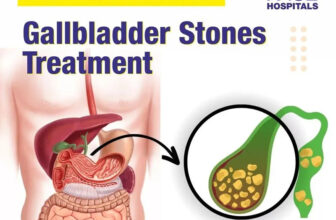
Lower back pain is a usual health issue among adults, and the chances of being affected by lower back pain rise as you age. Approximately 25 percent of issues regarding lower back pain are due to irritation in the sacroiliac (SI) joint.
In rare cases, stretching may alleviate SI joint pain by helping to lose tight muscles that are involved in putting extra stress on Si joints. Tight muscle groups surrounding your back, buttocks, hips, core, and thigh, can all potentially participate in SI joint discomfort.
What is the SI Joint?
The sacroiliac joint, also famous as the SI joint, works as a connection between the sacrum and the ilium area in the pelvis. As a result, it plays a crucial role in shifting weight from the upper area of the body towards the legs, declaring it an important joint that maintains proper balance and posture. These joints are found on both sides of the human body, so it’s necessary to stretch these joints while following the SI joint stretches. In addition, the SI joint participates in maintaining sustenance and absorbing trauma in the pelvis and spine. It also supports the distribution of weight in the upper body while standing, walking, jumping, or sitting.
Symptoms of SI Joint Dysfunction
SI joint dysfunction happens when the SI joint faces inflammation, irritation, or misalignment. This condition leads to pain and aches, targeting the hips and lower back. It is generally developed due to factors such as arthritis, pregnancy, and experiencing a traumatic injury. Knowing the symptoms related to SI joint dysfunction is mandatory in seeking proper remedy and managing pain by pain physicians in Dallas. Here are a few signs that may manifest SI joint dysfunction:
- Pain in Lower hip and back
- Difficulty sitting and standing for prolonged periods
- Pain while climbing stairs
- Pain during bending forward or turning
- Sensitivity or irritation around legs
- Limited variety of motion in the lower back or hips
- Hardness in the lower hips and back
- Leg disbalance
- Difficulty in sleeping
- Muscle stiffness in your buttocks and hips
If you are feeling any of the mentioned symptoms, ask the best pain doctor in Dallas for an appropriate diagnosis and complete treatment plan.
Stretches And Exercises For SI Joint Pain
Various muscles are connected to your sacrum and pelvis. If these muscles are overly stressed, they can lead to changes belonging to movement patterns. This, conversely, can put extra stress on all SI joints.
Stretching the associated muscles surrounding your SI joint can particularly help you relax these tight areas. This may facilitate and relieve tension from the lower back and allow easier movement with lesser discomfort and pain.
Try to fix some time every day for stretching. Even performing a couple of stretches in a few minutes per day can also show prominent effects.
If you’re experiencing ongoing SI joint pain that does not seem to improve with soft stretches, you must plan a visit to a si joint injections They can perform individualized stretching and strengthening plans along with si joint injections to help you treat your pain.
Let’s have a look at stretches and soft exercises you are allowed to do at home that facilitate relaxation in SI joint pain.
1- Knee-to-chest Stretch
This type of stretching supports the elongation of the muscles in your hip. If someone is having trouble hitting the knee, you can point a strap or band below your knee.
To Do this Stretch:
- Lay down straight on a mat or related comfortable surface.
- Put your left knee and place it toward your chest still you observe a stretch in the lower back of your leg.
- Keep this position for a minute, again repeat for the other side.
2- Butterfly Stretch
The butterfly stretch for SI joints has a visible impact on inner thighs and hips along with SI joint.This stretch improves mobility in these areas while providing pain relief. When you perform this SI joint stretch, target on your deep breaths while relaxing your lower back and glutes.
To Participate in Butterfly Stretch:
- Sit on the mat with the lower surface of your feet together
- While holding your feet, gently exert pressure on your knees in downwards direction
- Towards the ground
- Sustain the stretch for 30 seconds
- Do it again as required.
3- Figure 4 Stretch
Figure 4, a SI joint stretches is a perfect way to focus multiple muscle groups in the same go. You’ll possibly feel this stretch, particularly in your glutes and outer hip. You can utilize a strap or rope if you’re facing trouble hitting your knee.
To Do this Stretch:
- Lay down face-up on a surface with your feet in a forward position than you.
- Elevate your left leg to keep your hips and knee at roughly 90 degrees.
- Keep your right ankle as high as your left knee.
- Softly pull your left leg in the direction of your chest to the moment you experience a stretch.
- Maintain this pose up for at least a minute and again repeat on the right side.
4- Trunk Rotation Stretch
Trunk rotations support stretching the muscles present in the areas of your core. While performing this stretch, you must twist to a comfortable limit. Stop rapidly if it damages your lower back.
To Do this Stretch:
- Lie on the mat with your flat foot on the ground and your arms stretched in a T-position. The knees must be all together and targeted toward the ceiling.
- Place your knees together and turn to one side till you comfortably can.
- Turn to the opposite side and repeat 10 sets on both sides.
Band Abduction
This activity isn’t a stretch but can facilitate a reduction in the stiffness of muscles around your SI joint.
Make an effort to use a relatively thin band leading to less discomfort in your area of lower back while performing the exercise.
Conclusion
Stretching the muscles surrounding your SI joint may facilitate a decrease in pain by eliminating stress in your lower back.
When stretching the muscles, it’s appropriate to be more kind than being hard. Stretching more vigorously leads your muscles to tighten and worsens your symptoms.
If you’re experiencing chronic SI joint pain, there is a mandatory demand to visit a physical therapist at pain management in Dallas. They can allow you to create an individualized stretching and strengthening plan, particularly for you.







